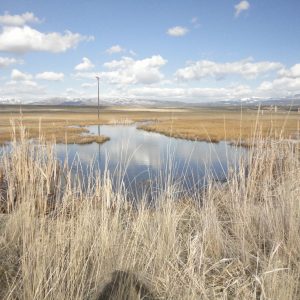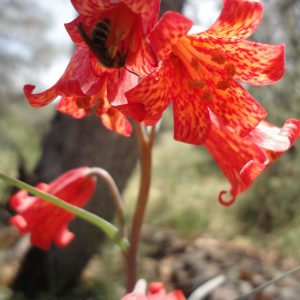The past month at the Alturas BLM field office has allowed me to delve into a variety of projects. These have included participating in pre-dawn marsh bird surveys at the Modoc National Wildlife Refuge, setting up a new line point intersect transect, scouting for seed collection targets, rare plant surveys and trying to teach myself ArcMap. My fellow intern Jaycee and I have been familiarizing ourselves with the Alturas BLM land. Our mentor Mike will point to a place on a map and tell us to get a feel for the dirt roads and where they go, of course looking for plants along the way. Names like the Tablelands, West Side Allotment, Muck Valley, South Ash Valley, Hogback Ridge and Conrad Ranch all have meaning to me now.
Mainly we have been learning the BLM special status plants and searching for them. The main threat to them is the juniper tree cutting which this office is carrying out. These cuts have the goal of both improving rangeland health and wildlife habitat. Fire suppression has allowed junipers to become overly dense and to encroach into areas of sagebrush steppe that were previously much more open and unpopulated by trees. The large machinery used for these cuts causes significant disturbance and the scene afterwards is reminiscent of the Lorax– tracks everywhere, battered stumps, and gigantic piles of trees (old growth trees are spared). However, hopefully this disturbance will benefit the ecosystem in the long run. The sensitive plants are particularly susceptible to disturbance in this process due to the habitat in which they occur. Most of the plants we have been searching for grow in bare patches that at first glance appear to be nearly void of life. Upon close inspection, these areas are full of strange, minature plants. Many of them have a showy flower larger than the plant itself. Somehow, in the brief window between snowmelt and the heat of summer, they manage to extract what they need from exposed volcanic gravel, and are able to grow, flower, and produce seeds. Unfortunately, these gravel patches are perfect natural parking lots. What better place to park vehicles and stage machinery? Habitats like these that naturally appear lifeless are often the easiest to destroy as we “turn the desert into the wasteland that we think it is”, as Gary Paul Nabhan puts it.
In fact, I can say that I personally participated in this process. About a month ago I did an ATV training course, which was located in one of these seemingly bare areas . Yesterday I happened to go back to where it was because my mentor found a rare species of penstemon there. Sure enough, as we were surveying the population, I found several of them in the ruts that we made during the ATV course! I’m not sure what, if anything, will be done about this, but at the very least we will go back and flag off the area where the penstemon is growing.
We have also been developing a target seed collectiong list for the Seeds Of Success program. The late blooming plants are in full glory and we have been excitedly collecting herbarium specimens. Some of the earlier blooming plants are now forming fleshy, green fruits that we will have to closely monitor to determine when they are ready for collecting. We picked apart what will likely be our first collection, the grass Poa secunda (which I described in a previous blog post) and looked at it under a microscope. It is done flowering and the fruit is still forming, but it should be ready soon. I’m grateful to have a such a dynamic job that puts me in close contact with natural processes!
Dimeresia howellii, a rare plant not much larger that a quarter
Joe Broberg






